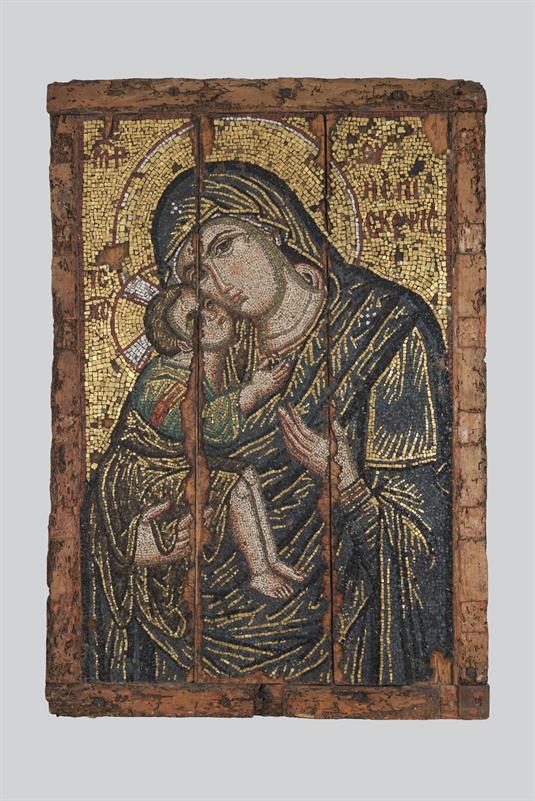Theotokos Glykophilousa (“Episkepsis”)
This particular type of the Virgin, in which the two faces are touching, cheek to cheek, is known as the Glykophilousa. This type presents the Virgin in her role as mother and as protector of mankind.
The icon is made of mosaic. It is a very expensive technique, rarely used on portable icons. In the middle of the lower frame can be seen a notch into which a pole was fitted, so that it could be processed during litanies, that is, ceremonial processions through the city streets. The rest of the time the icon would have been kept on the iconostasis of a church. It comes from Triglia in Bithynia, near Constantinople, and ended up in the Byzantine and Christian Museum as one of the ""Refugees' Heirlooms"", which came to Greece after the Asia Minor Disaster (1922).
- Collection: Icons and Wood-Carvings
- Origin: Church of Hagios Basileios,Triglia, Asia Minor
- Measurement: 107 x 73,5 cm
- Exhibit Number: ΒΧΜ 00990
- Appears in: II.3. Worship and art

Comments
Users must be registered and logged in to comment.
No comments found.